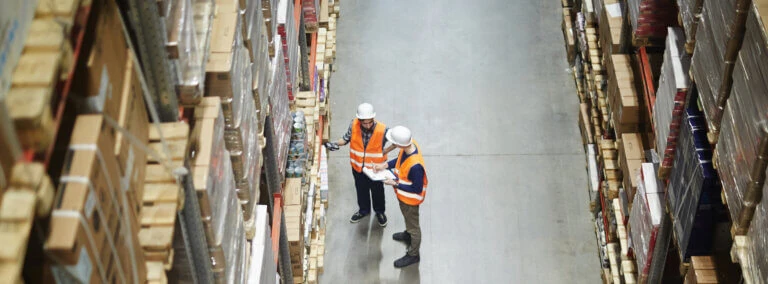EASY LOAD SECURING WITH THE RIGHT BANDING
Banding is used within the context of load securing and is used for strapping cardboard boxes, pallet loads and packaged goods. Transport goods and products can thus be securely transported and stored. Banding is available in various designs. They differ in length, width, rigidity and stretching properties, for example. If a user opts for strapping with textile banding, this can either be lashed or knotted. As a cost-effective disposable product, banding is used in all branches of industry, in the wholesale and retail trade, by shipping companies and in agriculture.
WHAT DIFFERENT TYPES OF BANDING ARE THERE?
Strapping is made from four different materials:
textile | plastic: polypropylene (PP) | plastic: polyethylene terephthalate (PET) | steel
Today, textile tensioning straps are used in many fields of application. This banding is produced, using modern production processes, to be so robust that it can readily be used as a cost-effective alternative to steel, PET or PP banding. The use of steel bands is recommended only for banding which has to withstand very high temperatures. Textile banding, also known as polyester banding, fabric banding or WG banding, offers a wide range of benefits.
Textile strapping:
Depending on the strength and tear resistance produced, textile/polyester banding is worth considering for both light and heavy loads:
- Protects sensitive surfaces and edges
- Extremely tear-resistant
- Weather-resistant
- Non-corrosive
- Easy manual handling without risk of injury
- Straightforward use – without force – even with a manual tensioner
- Can also be easily retensioned around goods which shrink using buckles
- Cost-effective alternative to steel banding, chains, composite banding, cords, etc.
- Custom production possible (colour and branding using a logo)
- Environmentally friendly production possible
FIND OUT ABOUT SANDER BANDING
Sander strapping is available in various versions as standard. In addition, experienced developers can produce custom production runs upon request at any time using state-of-the-art machinery.
Learn more about Sander banding here:
WHAT REQUIREMENTS DOES SUITABLE BANDING MEET?
In principle, choosing the right banding primarily depends on the nature of the load to be secured. In order to make the decision on the correct banding, a number of aspects need to be clarified. It is very important to answer the question of what external influences the goods and products to be secured are exposed to. For example, the volume of the packaged goods may decrease after load securing but before or during transport:
Load on the load securing
Static loads, e.g. due to solar radiation
- Moisture: rain, high humidity
- Temperature fluctuations
- Shrinkage: e.g. timber
Dynamic loads, e.g. due to
- movement of the packaged goods during transport
- Compression of multi-piece packages owing to shaking -> gaps close and the volume of the package is reduced
In addition to the question of external influences, practical and advertising considerations also play a role when deciding on the right banding:
- 1: Nature of the products and transport goods to be secured:
- How heavy is my load and is it strapped as a package (palletised goods) or in bundles (e.g. steel pipes, logs, loose bales)?
- Do the goods have a sensitive surface? - 2: How the banding needs top close:
- Is a manual device used or is it closed by hand without accessories?
- Does the banding manufacturer also offer accessories such as buckles and hand tensioners?
- Does it close semi-automatically or automatically? - 3. Should the banding also be an advertising medium:
- Is it possible to produce the banding in a specific colour?
- Does it make sense to put your own company logo on the banding?
Do you already know the answers or do you need our expertise? Then contact us directly!





